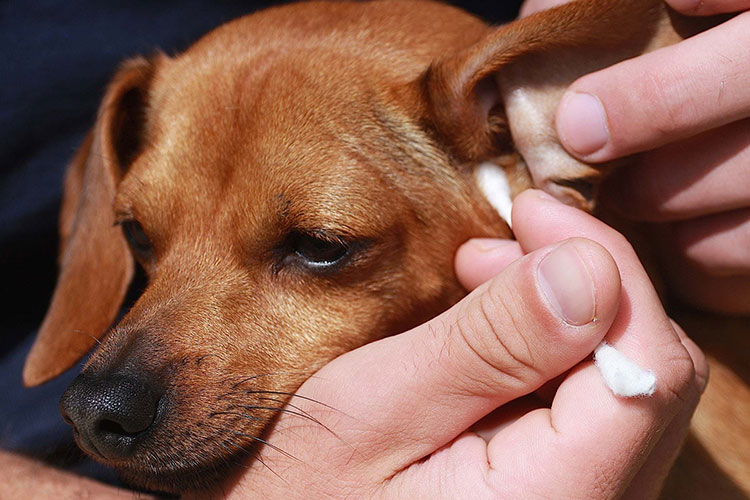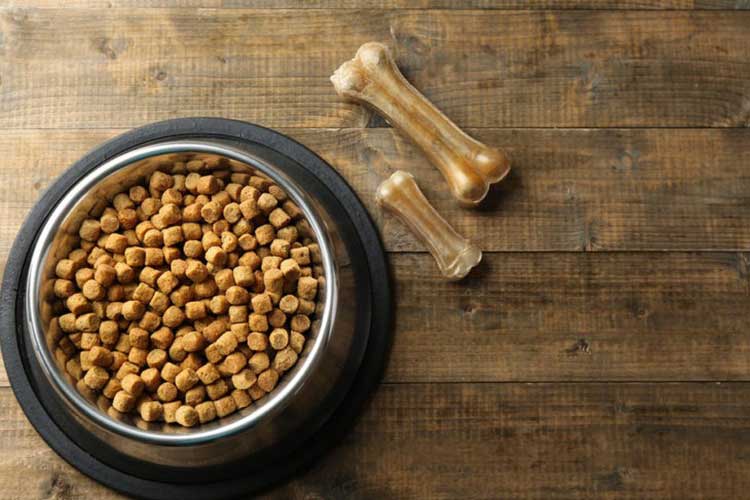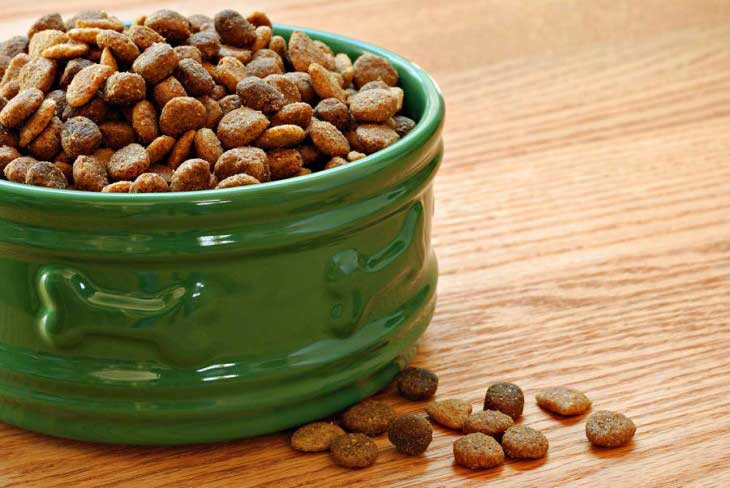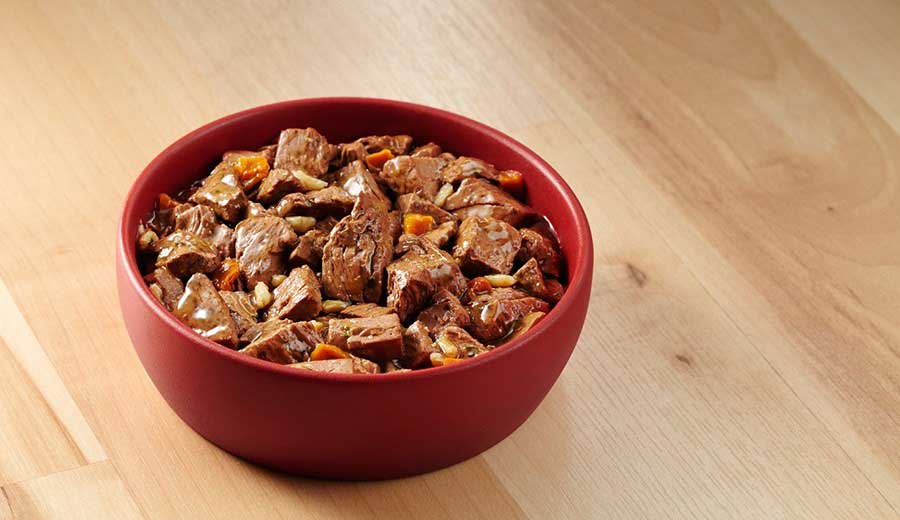
Dog ear infections or so-called otitis externa is one of the most famous types of dog infections. It’s important to take care of it properly as soon as you find out your pet is infected. Obviously, dog ear infections do not occur just like that. Dogs have beneficial or so-called friendly bacteria in their ears that are able to protect their health and annihilate harmful bacteria. Unfortunately, sometimes this balance is being disordered by allergies. One of the main reason of dog ear infections are foods like fish, beef, dairy products, chicken, soy, lamb, corn, wheat, and eggs. For these reasons we, as pet owners, need to be careful about what type of food we choose for our dogs.
We have millions of food options, all of them calling themselves the best dog food on the market. Among all the variety of choices, we need to find a dog food which is healthy, affordable and at the same time appealing to your pet. Doing this is very often depressive but we have prepared some nice pieces of advice to make everything easier for you.
What Can Be Considered as a Good Food?

Processed kibble or wet food is what dog owners usually feed their pets with. This may not seem appealing to us but this is the food that contains all the nutrients dogs need to stay healthy. At the same time remember that we need to avoid products, our dogs are not tolerant to.
Dogs, unlike cats and other animals, are not strict carnivores. It’s not a secret that meat makes up the most part of their diet, but domestic dogs also need to eat grains, fruits, and vegetables to get the essential vitamins, fiber, and minerals.
The Menu To Avoid Infections
The best dog menu for your dog should meet his own nutritional needs. It is necessary to keep in mind that not every canine has the same nutritional needs.
Dogs need a wide range of nutrients in various portions during their lives. For example, the nutritional needs of a puppy are of course different from an adult dog, and that is why we if you are unsure about the differences in nutritional requirements approach to your vet who’ll give full information about the recommended amount by weight and age. Right food will help you avoid from dog infections, including dog ear infections.
Misinformation and Dog Food Legends

The internet is now full of misinformation about dog food and dog nutrition and that’s the main reason we advise you to follow the trusted sources and double check it. There need to be a scientific evidence behind every information posted. Whenever following a blog advice or an article, check the author, make sure the information is provided by a veterinarian, nutritionist, or is being written according to a scientific study.
A lot of dogs are also having some specifications while eating. Though whole grains are actually a good source of wholesome nutrients, some dogs may have a grain allergy and that’s why you should surely choose a grain-free diet. Quality pet byproducts are as well a source of nutritious. These include entrails and organs, often containing more nutrients than the muscle meat consumed by humans.
Dog Food Label: Guide to Read it
Before buying dog food you surely need to read the label because it can tell a lot about how your dog can react to it. We know the torture of reading the labels as they sometimes have small fonts and there’s an awkwardness of handling bags in the middle of the store, but we as well know that labels can be misleading. While buying a dog food make sure the package label includes these eight pieces of information:
- Product name
The product name actually tells you a lot about the product. For example, the term “beef” in the name means that the entire product should include at least 70% beef. On the other hand, if it says “beef platter”, “beef dinner” or “beef entrée” it can contain only 10 percent beef. “With beef” means that 3 percent of the total product can be beef, and whenever you read “beef flavor” it’s okay if it contains only a small amount of beef to only give the flavor.
- List of ingredients
Remember that the list of ingredients doesn’t tell anything about their quality. Here we need to be careful, as meat, for example, is a tricky ingredient. Whole meats contain a large amount of water weight, meaning that the percentage of meat after processing is lower than it appears. At the same time, “whole meat” signs contain less meat than ‘’meat meal’’ no matter how less appealing they sound to us.
- Net weight of the product
- Intended animal species (i.e. dog or cat)
- Guaranteed analysis
- Statement of nutritional adequacy
- Feeding guidelines
It’s important to follow the guidelines, however, if you are going to give the food mixed with anything else, the best could be if you ask for an advice from your vet.
- Name and address of the manufacturer
Very often the same food from different countries may contain different amount and type of ingredients. Make sure the dog food you buy comes from your (your vet’s) ‘’trusted countries’’.
Dry Food: Choose The Best

Dog dry dog food is the most affordable and famous canine food available in the market. This food is easy to keep and serve as it does not require refrigeration or heat: it contains nearly 90% dry matter and only 10% water. This makes it easy to store. This kind of food is a combination of cooked ingredients like grains and meat. This is just the easily digested form of food your dog needs, plus this method also flash sterilizes the ingredients and destroys toxins.
The best dry food for your dog among all the others on the shelve depends on your dog’s special dietary needs. The best could be if you talk to your vet and get the guidelines about which food can be the healthiest one for your pet.
Wet Food: Choose The Best

Canned or wet dog food, is an alternative to dry dog food. This type of food is a bit more expensive, wet dog food is more delicious and enjoyable and can help stimulate the appetite of picky-eating pets. Wet dog food usually contains the majority of the same ingredients as dry dog food, but the quantities are different. There’s a higher amount of fish, fresh meat, poultry, and animal byproducts as well as more textured proteins derived from grains. Because this type of food is canned, it obviously it has a long shelf life, but as soon as you open it, you must keep it in the refrigerator.
And of course, just as with dry dog food, the best wet food for your dog, mostly depends on your dog’s age, life stage, special dietary needs, breed or possible allergies. Again, discuss which wet food to choose from your vet as he, most probably, understands your dog’s needs better than you.
Long story short, the best dog food for your dog is of course up to you and your vet to decide. The owner is the one who’s around his dog on a regular basis so you will know better how he feels: if he is active and fit, has a healthy appetite and produces firm and healthy stool then your dog is probably feeling fine and his food is working fine as well.
Together with your experience, your veterinarian is a valuable resource which advice must surely be taken into account. Your vet is the one to help you narrow down your possible food options and give valuable pieces of advice to keep your dog healthier and happier.



